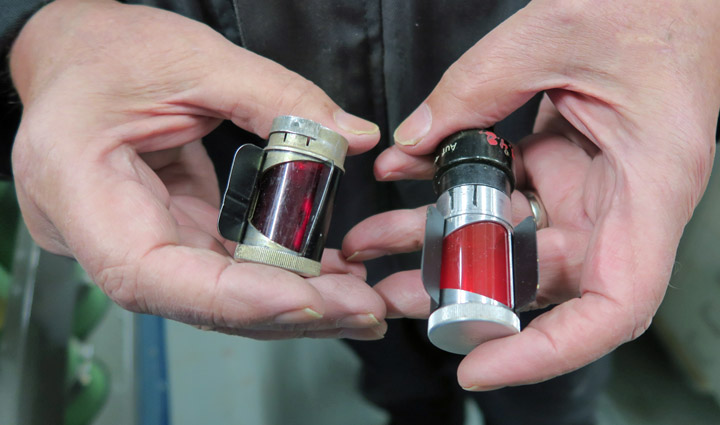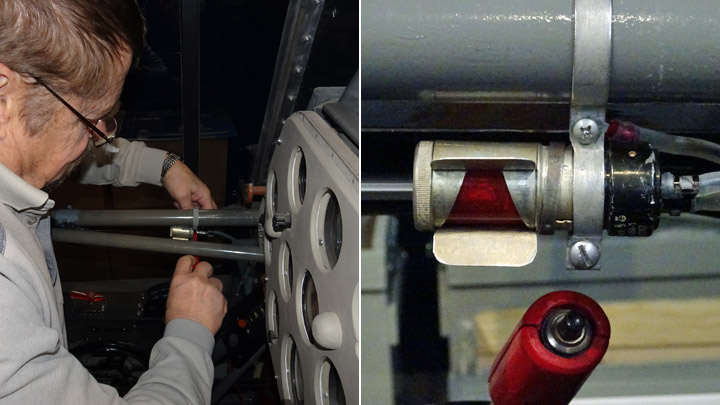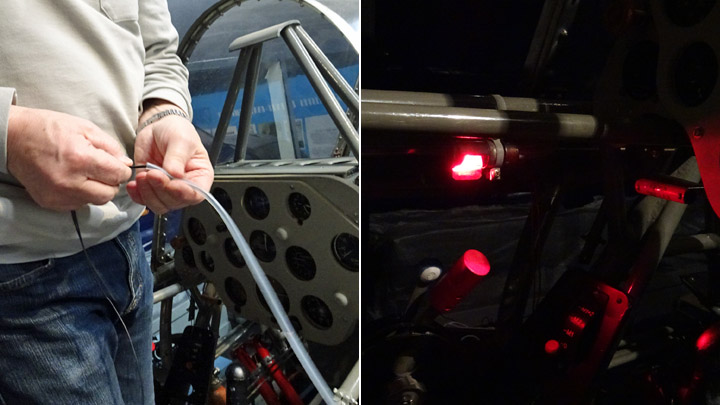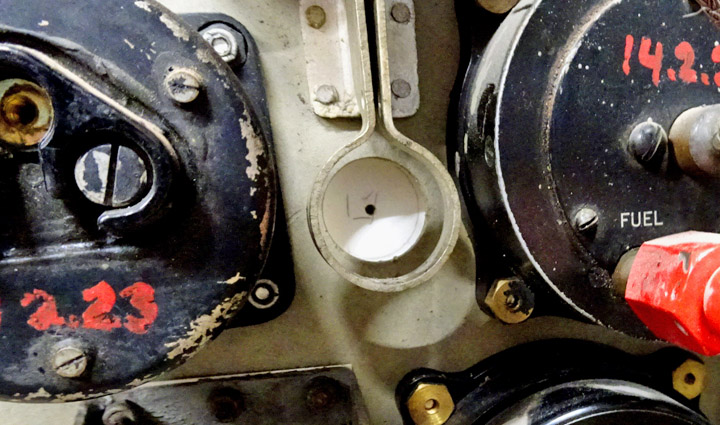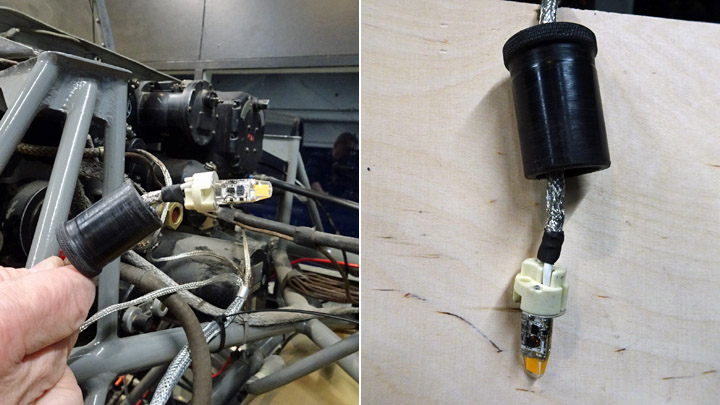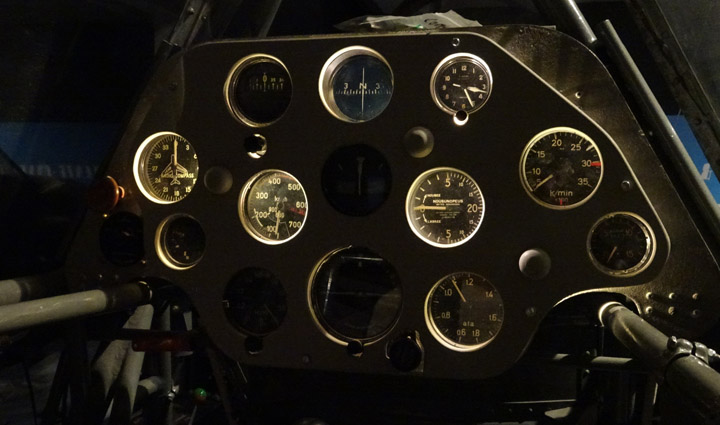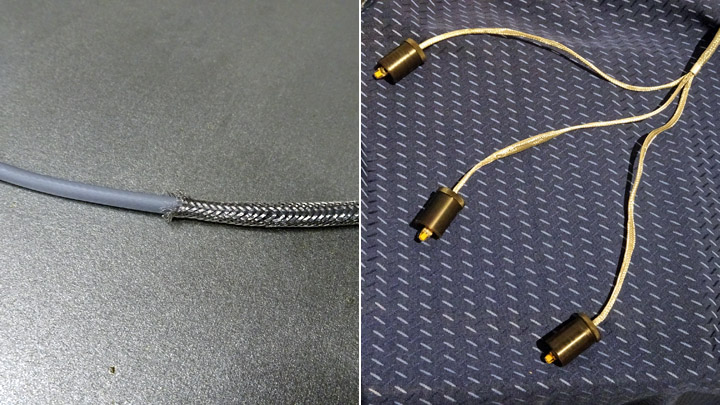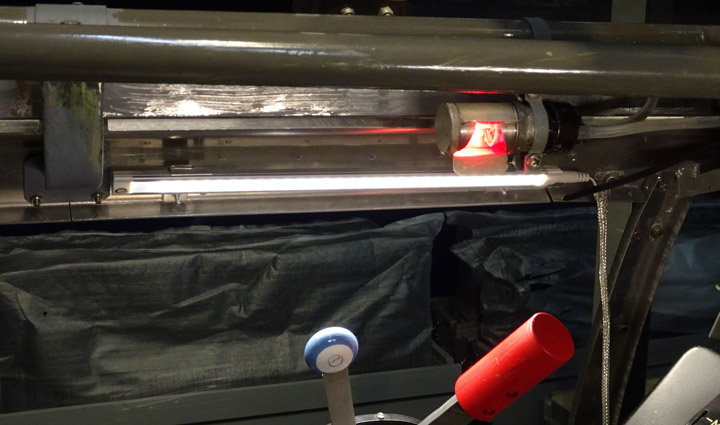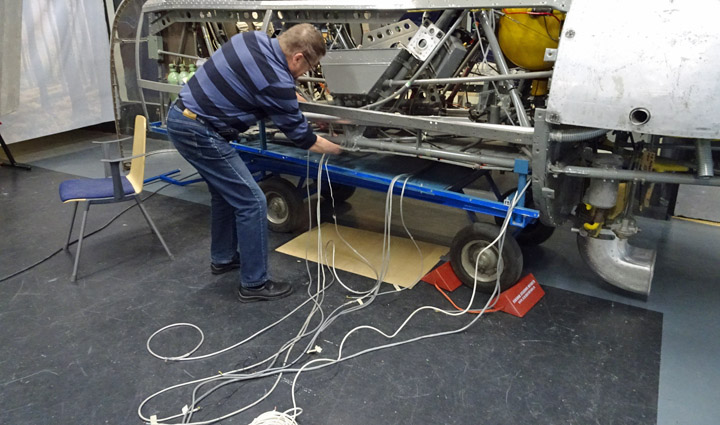Lights installed in Vihuri (VH-25) cockpitKeskiviikko 20.12.2017 - Member of Tuesday Club The last phases in the restoration work of the Valmet Vihuri II (VH-25) cockpit included the installation of the cockpit lights, the instrument board background lights, the light of the sight and the display lights when the cockpit is in the museum. Finally the sides of the cockpit will be covered with aluminum plate and plexiglass. Originally the Vihuri had a 24V direct current electrical system. The positive pole of the system was insulated from the fuselage of the plane and the negative pole was connected to the fuselage. However, in the restoration of the Vihuri cockpit a 12 V alternating current system was chosen. In this system both poles of the system are insulated from the fuselage. The mains voltage (240 V AC) is transformed into a low voltage (12 V) and rectified to direct current. This power supply (12 V DC) is connected to the Vihuri lighting control panel, which supplies power to each lighting fixture. The front and rear cockpits of the Vihuri has small red lights on both sides of the cockpit. The light is tinted red in order to disturb the pilots’ night vision as little as possible when flying in dusk or in darkness. The amount and direction of light can be adjusted simply by turning the shade around the glass of the lighting fixture.
Three original cockpit lights were available and could be installed into the VH-25 cockpits, but the fourth lighting fixture was missing and had to be made. Fortunately the base of the fourth light was found. The body, the glass and the turning shade of the lighting fixture had to be made to resemble the original ones. The body was made of aluminum, the “glass” was cut from red plastic and the cover was made from aluminum plate.
When the fourth cockpit lighting fixture was ready, all four lights were installed in the cockpit by attaching them to the original fasteners in the upper parts of both cockpits. The original incandescent lamps were replaced by led lamps. Leds were chosen because the cockpit lights are always on when the VH-25 cockpit is on display in the museum and the heat emitting incandescent lamps wouldn’t be a good solution. Installing the led lamps into the original lighting fixtures wasn’t a problem because the leds have the same type of socket (BA 15d) as the original incandescent lamps.
The original power cables of the four cockpit lights in the Vihuri are protected by transparent plastic tubes. A similar installation was chosen in the restoration work, but using similar thin silicon tube. In the original installation there were two cables (positive and negative) from each lighting fixture installed into the plastic tube and the negative cable was connected to the fuselage. The cabling was changed so that both cables are inside the tube and they connect the lighting fixtures to the lighting control panel. The red lights were turned on when the power was connected.
Three background lights were installed behind each instrument board. Unfortunately there were no original background lights available and all of them had to be made. Fortunately the instrument boards still had the clips for the lighting fixtures so that the size and shape of the lighting fixture could be estimated.
The tube-shaped bodies of the lighting fixtures were lathed from plastic. A cable was pulled through the body and the wires were attached to the base of the fixture. Led lamps with G4 caps were attached to the base. When power was supplied to the cables, the background lights illuminated the instrument boards.
The cabling was made by using one cable from the lighting control panel to each instrument panel. According to the drawings of the original installation, the wiring was branched at the instrument panel to supply each of the three lighting fixtures. The light of the sight was installed in a similar way.
In the Vihuri the background lights of the instrument boards and the sight light had originally armored cables. The armor, i.e. the braided metal covering of the cables, was meant to protect the power supply from disturbing external signals. However, the armored cable used in the restoration work of the instrument panel lights had three cables whereas the original one had only two. Therefore the three-wire cable was pulled out of the armor and replaced by the two wires leading to the instrument board lights. At the same time the armor was stretched in order to make it thinner, resembling the original one used in the Vihuri.
The Vihuri cockpit will be on display in the Finnish Aviation Museum. The red lights in the cockpits, the instrument board lights and the sight light were adequate for the pilots but they won’t be able to illuminate the cockpit enough for the museum visitors. Therefore four 30 cm long led tubes were installed as display lighting. The leds were attached to the upper edges of both cockpits, trying to install them as unnoticed as possible. Depending on the position of the cockpit in the museum, the lights will be controlled so that the leds are on only on the side where the viewer is standing. In this way the lights on the opposite side will not produce disturbing glare.
Now the cockpit lights in the Vihuri as well as the instrument board background lights, sight light and the display lighting were working. The last phase was to organize the various cables from the lighting fixtures to the lighting control panel into a tight group. This was done by attaching the cables to the cockpit frame tubes by using original clips and new clips made to match the original ones. |
|
Avainsanat: aviation history, Tuesday Club, museum aircraft, Valmet Vihuri, VH-25 |


